How to Structure Your E-commerce Google Ads Campaign

Hello, and welcome to whiteboard sessions. My name is Andrew Maff. I'm the founder and CEO of BlueTuskr, a full-service digital marketing company for e-commerce sellers. And what I'm going to show you today is exactly how we structure Google Ads campaigns for e-commerce sellers, we're gonna get into bidding and settings and different audiences and things like that at a different time.
But what I really wanted to go through today is exactly just a high-level top line of how we structure shopping search and Google display ads. And I'm going to get into a couple of different things here specifically on the shopping side, where I'm going to kind of touch on whether that's even really good for your company or not because everything I'm going to tell you is basically going to be based around the same concept, which is that every product, every business, every category, and every business owner are very different.
That means that sometimes these strategies don't always work, depending on what your certain goals are. But I'm going to tell you how 90% of the time how we start off a Google Ads campaign, and then how we adjust from there as time goes on. So what I'm going to do is I'm actually going to kick this off, I'm going to show you how we start off with shopping. And shopping has three different types of campaigns, right.
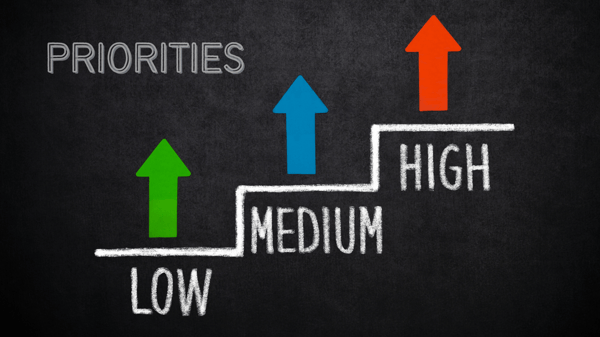
High Priority
You have a High Priority, a medium priority, and a low priority campaign. So we're going to pretend that we have one product line for now because really all you have to do is replicate this concept for however many product lines you have, or if you have to get very specific with a product or anything along those lines. So basically, we're going to start off up here with a shopping campaign. That's a high priority.
Basically, what that means is that you're telling Google that this campaign is my main priority. And that's how I want to show my ads most. So usually, what I'm going to do here is I'm going to start these bids kind of low because, in my eyes, this is essentially a prospecting campaign. This is what I'm learning, like, what am I showing for is Google headed in the right direction, because Google's going to pull all that data from your description, or your product title, or your meta title or meta description, depending on how you set up Merchant Center.
But I want to see like, Okay, what am I showing for so in this case, obviously, it's a specific product line. And I'm going to start to see like, Okay, I'm showing for these terms very often. And then, of course, I'll go in and on the date in which again, I'm going to get into that in a different video, we're just going to talk structure for now.
Medium Priority
So the next thing I'm going to do is I'm gonna create a medium priority. So it essentially works like this. So it's another shopping campaign with a medium priority. And basically, what happens here is, as I start to learn, okay, I have a term here that's doing really well, I'm going to negate it. So I'm actually going to tell Google, Don't show me for that term that's doing well in the high priority.
Now, what I want to do is I'm actually going to allow that to drop down to the medium priority, and I'm going to increase this bid a little bit. So let's say this bid is that I don't know 50 cents, which might be a little high, but 50 cents for now. And you're going to have to adjust that as time goes on. This isn't where I suggest you start, this is going to be very dependent on your product line.
But let's just say 50 cents, which means this medium priority one, I'm probably going to do closer to 75, maybe to $1. And basically what's going to happen here is obviously so I said I'm going to negate the keyword that I said was doing really well. And that keyword is going to drop down into this medium priority, where I'm now increasing my bid. So then that's where the low priority comes in.
Low Priority
So now once I see, okay, that keyword is still doing well here, and I'm justifying selling it at a certain cost. So I probably have these to maximize conversions or something along those lines. But basically, what I'm gonna do is I'm going to gate it again, and I'm gonna drop it down into a shopping low priority campaign. So now, I have a low priority. And basically what I'm doing is I'm forcing this keyword that did really well down into the lowest priority.
Now I see I know, it seems kind of backward, at least it did to me when I first started doing this, where I was like, wouldn't the low priority be my highest priority because it's my best keywords, but it's just not how it works. Basically, Google's a little bit more selfish and wants to say that that's their high priority. So basically, what's happening is you have a 50 cent bid here in this scenario as a high priority, I find a keyword that was doing really well so I actually negated it, and then that's going to cause it to drop down into the medium priority.
Now, something else to remember is that when you negate a keyword in the high priority, and it drops down to the medium priority, that's what you want it to do. However, if you get a keyword in the high priority that you don't want, and you're like this keyword sucks, I don't want it and then you negate it, it's going to drop down into the medium priority. So what you need to do is create a list in keywords, I'm sorry, in the high priority campaign, so that when you negate it.
You can actually add that list as another negative keyword thing to reference for the medium priority as well as the low priority so that when you negate it here in also negates it through all three. Whereas if you find a keyword that works really well, you're going to keep that one out of the list. So basically what happens, you negate it and it drops down to the medium priority. So then your 75 cent bid is now high, bidding higher for that specific keyword, then what happens is it comes down to here, and now we have that keyword in my low priority.
I'm gonna make this bid. I mean a bare minimum of $1, probably even higher, depending on what my role is, and I'm looking for it, but if I can justify a higher bid and I go, Okay, I know I'm converting at a certain percentage, then basically, what's going to happen is I'm now bidding incredibly high on one very specific keyword. So when you hear all these people talk about, like, you know, how do you hyper bid on this shopping campaigns, because of the way that these things work, this is literally how it is.
It's basically like a giant funnel. So you're basically funneling all these keywords that Google's finding for you, and just shoving them down into the very bottom of the funnel so that you're focusing on your low priority campaign. That's your shopping. So now, at this point, once you've gotten all that data, and you've gotten it down to here, you've pretty much started to own that top carousel where all the shopping products are so that you're actually basically your product showing up first, most of the time, you got that bit high enough.
So now how do you own more real estate? This is where search campaigns come in. So now what's going to happen is I'm going to take all the keywords that I know I'm triggering for the low priority, and maybe the medium priority that one's going to be up to, but I'm going to create what I kind of refer to as like a top campaign, it's just or a successful campaign, you can call whatever you want does really matter.
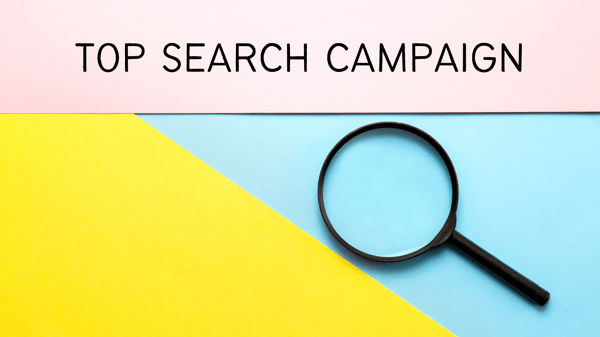
Top Search Campaign
I'm going to create a top search campaign. So we're going to take all of these top keywords, and we're going to drag them over to this top search campaign. And I'm going to just make those exact matches. So basically, I already know that I'm converting for this keyword. So I already know that I'm going to convert for it here. Some people like the are visual shoppers, so they see the picture and the product in the shopping carousel. Some people are readers. So they're actually going to read more information about your product.
Maybe there's something that your picture is not giving away. So maybe you want to get a little bit more specific in the copy here, right. So this is basically how we start to move over all of our top shopping campaigns into what we refer to as a top search campaign. Now, this whole funnel structure can work the same with search campaigns. So now let's say we're starting to get a few conversions here that we like, but maybe are too far in between. And then we have a bunch here that we like they're doing well. So what I'll actually do is create another campaign, which will just be a typical prospecting campaign, but on the search side.
Prospecting Campaign
So this is my top and then this is going to be my prospecting search campaign. So this one, I'll probably have my bid as a maximize conversions. So basically, I'm going to allow Google to figure out whatever it wants to bid as long as I'm converting, so we'll set this to maximize conversions. And I'm going to set all of these to phrase match. So the reason I said all those two phrases match is that I know I'm converting for these, and I know which search terms are showing up. But I'm not sure I'm not converting at the best rate that I want to what I'm going to do is I'm going to make it a phrase match.
Basically, I can start to learn. Here's a very specific term that I'm that I'm converting for. So then what I'm going to do is the same thing I did here, I'm going to negate that keyword here. And I'm going to move it down to here and I'm going to change it into another exact match. So this campaign right here, my top search campaign is going to be just an exact match, there's going to be nothing else in it, this one is going to be just phrase match, there's gonna be nothing else in it.
In my personal opinion, don't use broad match in Google ads for search campaigns at all, the way that broad match ads work. Now, it's incredibly difficult to control because it's not as simple as if you're running Amazon ads where it's kind of like, you know, words can go in between words, it's actually more of like, if it sounds like this, or if it looks like this, or it's just Google's algorithm. And I don't like it because it gets too uncontrollable.
I focus a little bit more on phrase match, and I let my high-priority shopping campaign do all the prospecting for me. And then this one's a little bit more specific, so I'm not wasting too much. But it's also prospecting for me. So they're all going to drop down to here. So you can see here, these are my two big guys. These are my two campaigns where I go, Okay, I'm converting into a really good level here. This one, what I'm going to do a little bit differently is that this is a maximize conversions, I'm going to change this one to a target row as or a target CPA depending on what you're doing.
Some people might have the ability, you might be selling a b2b product, it might also be doing leads, in which case a CPA might be better for you. If you're doing leads, you want to use a target CPA, if you have the ability to pull in conversion value for everything that you're doing, which most e-commerce sellers do. Then you're going to want to do a target row because you have that data Get some provide to Google and you want to make sure that they have that. So basically what's happening here, just a quick recap of the shopping search side is a high priority campaign, find a great keyword, negate it low bid, drop it down to a medium priority, slightly higher bid, then another same keyword might still be doing well, great, we've confirmed it, let's drop it down to a low priority.
Now my low priority is my highest bid possible that I'm okay with spending. And then what I'm going to do is I'm going to take everything that shows up down here, I'm going to move up into this top search campaign where I have only exact match terms, and I'm doing a target row. So I know that even though these are an exact match, I'm going to control how much money I'm making on it.
If you're looking for a 3x return, you can do a 3x row as on this, or 300% row as and be able to target exactly how much you want to spend on that specific keyword, then up here, I'm going to create something similar to these two as a phrase match. And every time I find a search term that's specific that I know works well I'm going to make another exact match and put it in here. So most of my budget, after time has gone on, you've got enough data is going to be in these two because I want my bid to be as high as possible, I want to be first and I want to know that I'm getting my return that I want to hit.
I never want my ads to shut off at any time during the day, or any day of the week, unless obviously, that was what you intended to do, which is bidding, which I'll get into in another video. But essentially, most of my budget is going to be here. And then the rest of your budgets going to be up here, right. So these are kind of like your testing ads. So this basically covers the shopping and the search campaigns. So now let's talk about the display. Here's my problem with the display, there's a couple of things on the display side one, you don't have as much control as you would want to I actually prefer personally to use ad roll, because ad roll essentially connects to Google and uses all of Google's real estate like you would in Google. But it also does the same for Bing or Microsoft ads. So now you're actually getting to leverage both sides where you can use as much real estate as you want. And they also have some websites where they're able to be featured on there also. So basically, you get a lot more reach with what you're doing on ad roll. However, you can do the same stuff on Google, so it's kind of irrelevant.
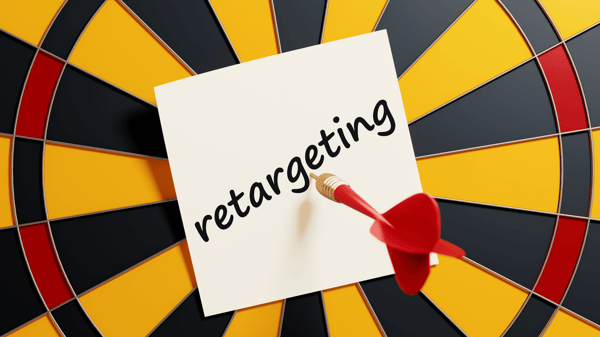
Retargeting Campaign
So basically, all I prefer to do is just one retargeting for a display ad. Basically, anyone who got sent that way just wasn't ready, ready to convert, yet. They're getting retargeted with something specific to whatever it is they searched. So if it's a search campaign that I'm doing, I'm obviously sending them to, let's say, a collections page, if you're using Shopify, or any kind of category, right, so let's say you're sending them to a category. In that case, I want to retarget them with whatever that specific category is. So we're selling.
I don't know dry erase markers. We have a bunch of dry erase stuff. We have these whiteboards, we have all this stuff, but they went through my marker campaign. And these are all based on markers. And then the ad the landing page that they landed on was all about markers. What I want this to look like is all my creativity is going to be just markers. So I might have multiple retargeting ad groups, or you could do an ad group.
But you could have retargeting campaigns, where basically the creative is really catered towards what it is they saw because you want it to be as personal as possible. You could get it down to what specific product that they saw, which is completely up to you. They also have it where you can do it as dynamic, so we'll show the product for you. That's fine. The only other time that I'm using display ads outside of retargeting is if you want to try targeting a certain audience.
Audience Targeting
So if you're going to target a certain audience, basically what you want to do is you got to think about the product. In this case, you're presenting a solution to someone who wasn't actively searching for it. In shopping campaigns, someone was actively looking for your product and search campaign, someone was actively looking for your product and display ads. If you're retargeting, they look for your product and chose not to purchase. If you do something where your audience is targeting, they're not looking for your product, you're just showing it to them in hopes that they are relevant to who you're looking for.
So that is one way to do it, that's going to come down to your product line. Because that might not always be the case. If you think about something that's like a last-minute purchase. So maybe dry erase markers could work, okay for an audience with the audience's role abroad, so I may not suggest it. But if you're thinking something along the lines of something more specific, so they looked for a specific printer or something that you actually that they know you were going after a certain model or something, then maybe I'll do audience, but that's again, that's going to be on a case by case basis. The only other time I'm going to do a display is if I'm doing some kind of campaign. So maybe I have a new product that came out or maybe I have a sale that we're doing or maybe some seasonal theme that we're going for.
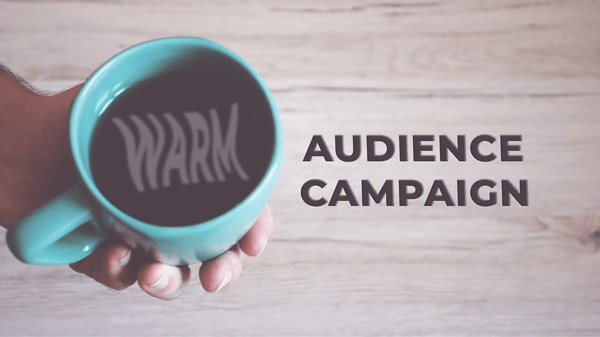
Warm Audience Campaign
Then what I'm going to do is I'm actually going to create a warm audience campaign where essentially, we're targeting people who have visited your site before and didn't purchase people who did purchase, if you can integrate your list, then do that. So basically anyone who already is familiar with your brand, then I'm gonna send them the ads to whatever sale we're doing or whatever new product line released because they're more likely to convert, the prospecting of an audience would be a little bit more difficult, it's gonna be a little bit more expensive, just because of how much you're you have.
So that's gonna be a little bit depending on where your budgets are at, but your warm audience is more likely to convert. So this is essentially exactly how we set up ads, I would say 90% of the time, it's going to completely come down to your product line if you have a really specific product line. So maybe you're selling, let's say replacement parts. So you're doing replacement ink for printers, and someone looks for a very specific ink that you have, you probably want to do a bunch of these where you haven't maybe broken down by brand or maybe broken down by printer brand.
Then you want to just start to negate everything that you don't have obviously until you get down to this low priority and then set this up. retargeting would probably be all I would do in that situation. But there's a ton of different situations. But this is essentially how we do it.
So if you're watching this video, you're obviously on our YouTube channel. If you have a specific product and you want to know how should you structure it, just comment, and either I or someone on our team will get back to you and give you our advice on how necessary this setup may be. But I'm going to tell you 90% of the time, this is exactly how we do it.
So I appreciate you watching the video. This is how we structure our Google ads. If you ever want to have a question, you can obviously comment below. Thank you for subscribing to our YouTube channel. And if you didn't yet, please subscribe to our YouTube channel and keep an eye out because we do a bunch of these more so that you can actually get some insight and if there's something else you want me to cover, feel free to comment and I will make sure that we tackle it next time. Thanks
Watch the Video Here:




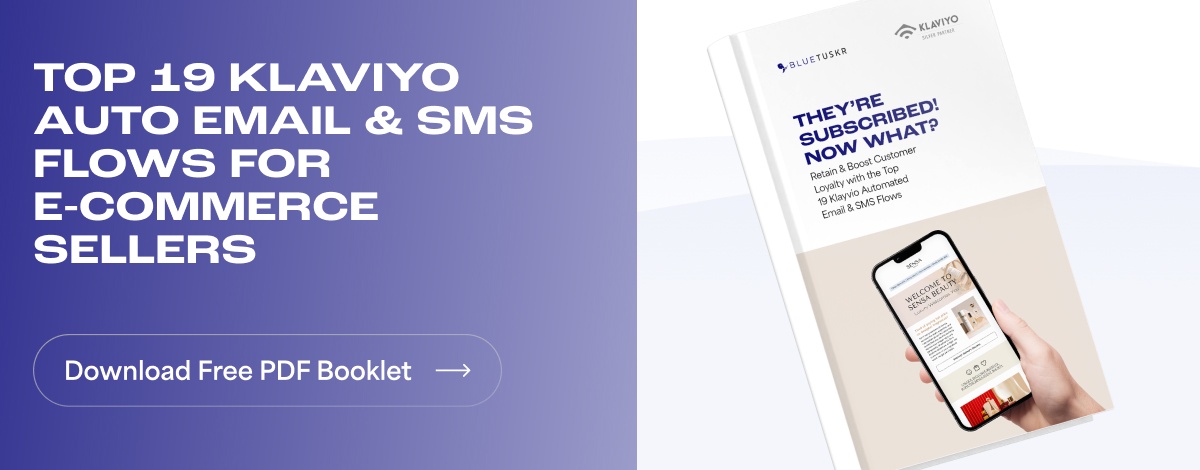



Leave a Reply